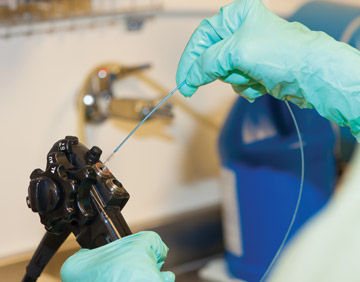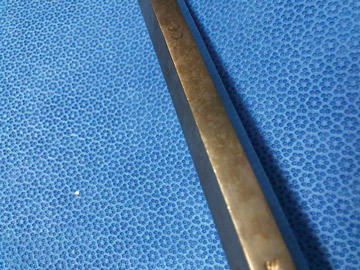Any reprocessing tech worth their scrub brush knows dirty instruments can't be properly sterilized. There's another instrument care risk hiding in plain sight, however, that can jeopardize patient safety.
"Staining is a major problem because it can lead to pitting, rust, instrument impairment, breakage and the protection of bioburden," says William DeLuca, CRCST, CIS, CHL, director of sterile processing at Mount Sinai West in New York City.
He says staining on instruments that have been cleaned and sterilized can be caused by several factors, including water with a high pH level, the use of improper detergents and enzymatic cleaners in instrument washers, caked-on blood, soaking instruments in saline, processing two different types of metals in ultrasonic machines and allowing water to dry on instrument surfaces. Mr. DeLuca says the following ways to prevent instruments from becoming stained are effective:
- Make sure detergents are properly mixed and diluted in instrument washers.
- Always follow manufacturers' instructions for use (IFUs).
- Audit OR case carts in decontamination to ensure visible debris and gross soil is removed from instruments.
- Make sure OR personnel are using enzymatic pre-cleaner solutions on instruments immediately after use.
- Use clean, soft-bristle brushes (no hard-wired brushes) on instruments in decontamination.
- When using surgical stain remover, make sure instruments aren't soaking it in for too long.
These practices can limit the repair and replacement of instruments, according to Mr. DeLuca. "In addition, the process can improve surgeons' satisfaction with the functionality and appearance of their instruments," he says. "Most importantly, it can improve outcomes."
Mr. DeLuca points out that advancements in water treatment systems are also helping in the fight against staining by reducing the levels of impurities in the water used in instrument washers and autoclaves. New and improved detergents and ?enzymatic cleaners ?can also be less harsh on ?instruments.
Finally, it pays to be proactive. "You don't have to wait until staining causes a patient care issue to start an instrument staining reduction project," says Mr. DeLuca. "Controlling stains should be an ongoing goal. Be creative and come up with ways to start auditing ?instrument trays. Then, when you observe instrument staining, perform a root cause analysis to find the problem and attack it."
.svg?sfvrsn=be606e78_3)


.svg?sfvrsn=56b2f850_5)